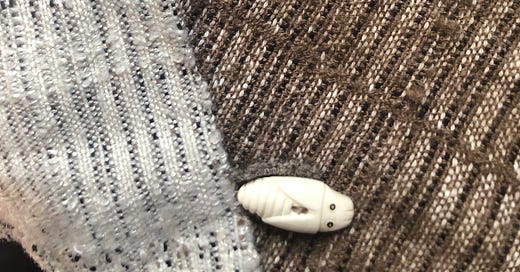First: Some Big News!
I will be the Artist in Residence at Dogwood Canyon Audubon Center in Cedar Hill (my home town) for the entire summer of 2025. I plan to host lots of spin-ins, crafternoons and workshops. We are working on the calendar and I will have more information soon!
Also this…
There are still a few seats left for my Spinning Workshop on April 12th at Ewe2YArn in Waxahachie. Ewe2Yarn is a fiber-lovers Paradise!
Color and luminosity in wool
I have respected Joseph Albers since my undergrad days in Art History classes, but it was Anni I loved. She is still my favorite. One thing they share is close attention to the relationship between colors and light in everyday materials.
When we make one of our (frequent) stops at book store, I gravitate to the textiles section first, then move to art history, scanning for ALBERS on the spine. I frequently have found bios or art criticism of Joseph’s work. Only recently have I found more books about her than him. Twice I have danced in the aisle when I found Anni’s book On Weaving. First a Dover copy of the original and then an early edition!! It is a ground breaking book.
I had these principles of color theory in mind when I set out to weave a small scarf using a range of non-wool animal fibers that ranged in colors from cream to dark grey. How would the values and hues interact with one another? It wasn’t until I got into weaving that I realize how much the texture the fibers affect its interaction with light on the surface of the fabric.
Quvit, Cashmere and Baby Alpaca
Marsha Whitton-Nagy, my very dear friend, once taught school in Alaska. She brought me some quvit, the wool of an indigenous musk ox. It is a rare and precious fiber. I spun it in to gossamer thread, trying to get as much mileage as possible. From it, I knit a small scarf for my mom. She wore it with a powder blue all-weather coat for years. When she passed away, I brought the scarf home with me.
Last year, I unraveled the scarf in order to weave with it with the small quantities of baby alpaca fibers my son and his wife gifted me, from a Farmers Market in Kansas. And, a tiny sample of cashmere gifted to me by another friend. The quvit, which I would describe as grayish brown, changes dramatically with different lighting. In daylight, it is almost metallic grey, by lamp light, it becomes golden.1
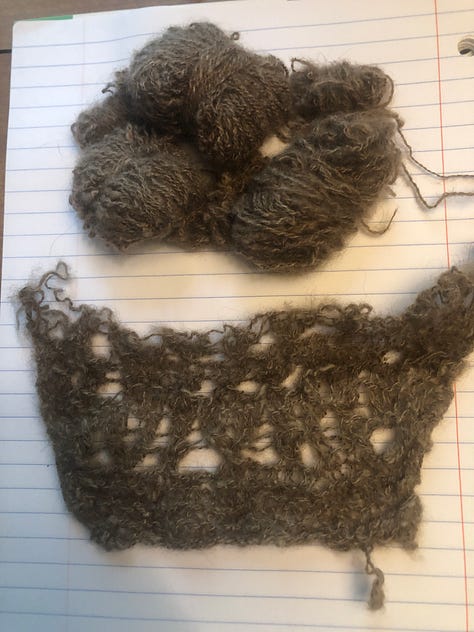
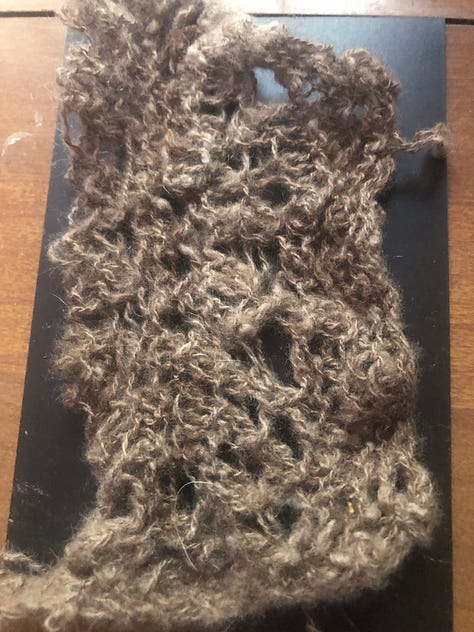
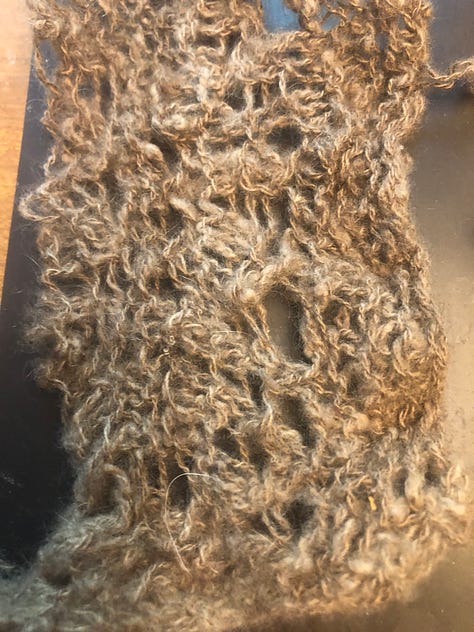
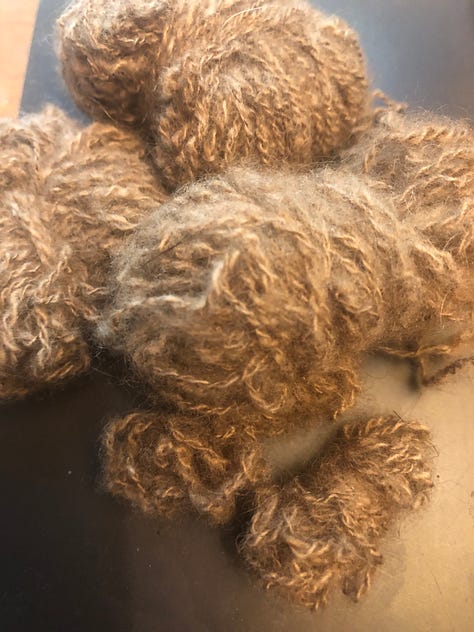
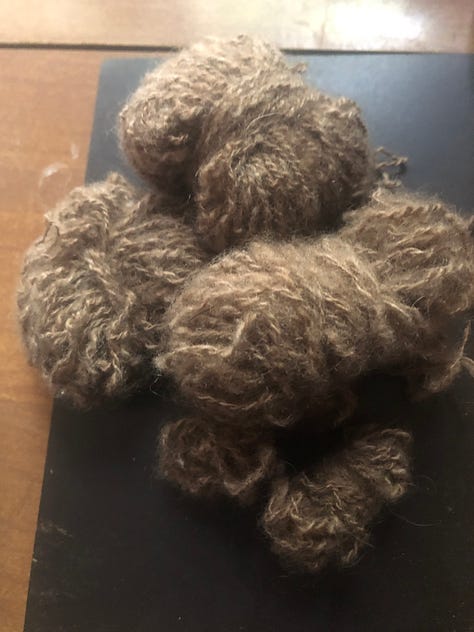
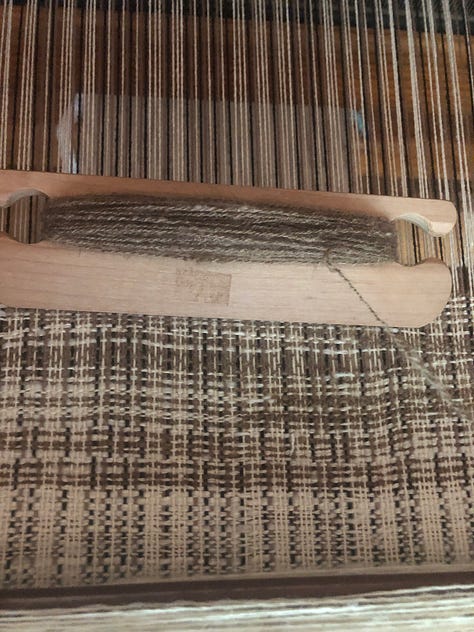
I have observed this luminosity in yarn from long-wool sheep breeds such as Lincoln and Teeswater. Down wools, Shetland and Bowmont for example, are usually more light-absorbing than the long wools.
Humans have been using fabric to reveal and conceal since the first string skirt2 was assembled. We are rather predictable as a species. The textiles we wear, or display in our homes, tell other humans what is important to us and where we see ourselves in the world.
Here are some more photos of the final product. I love the way the black baby alpaca reads as navy-blue in the sunlight.3
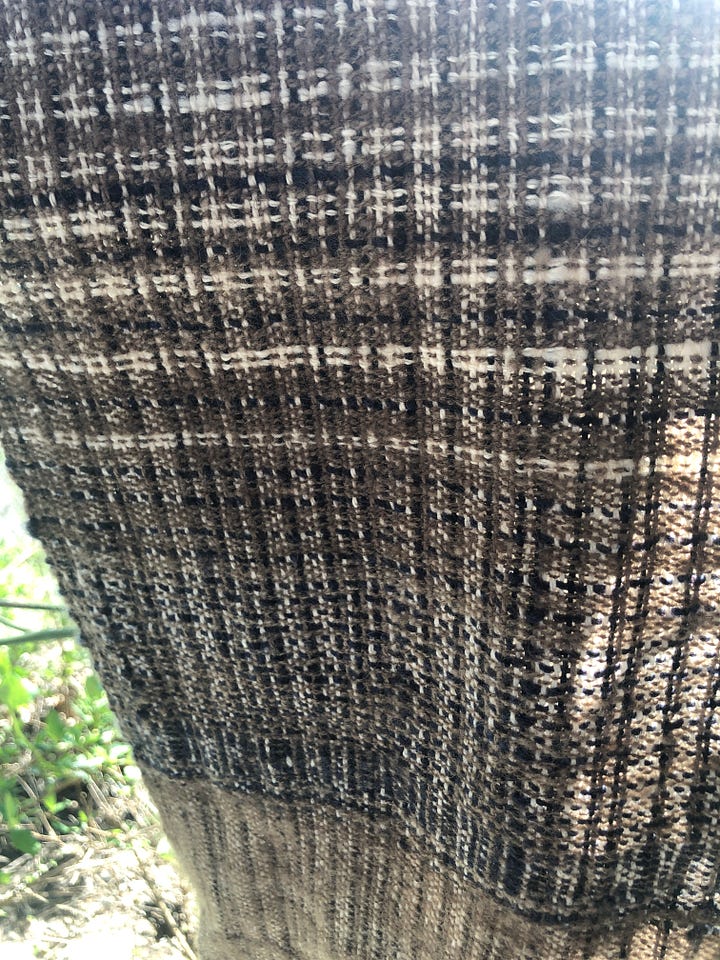
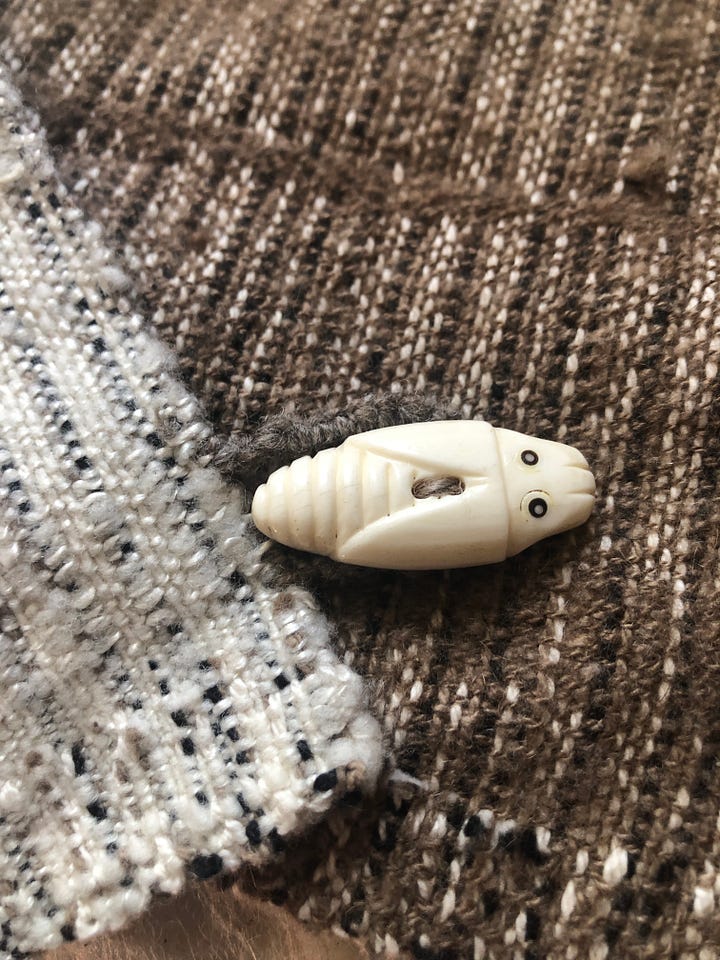
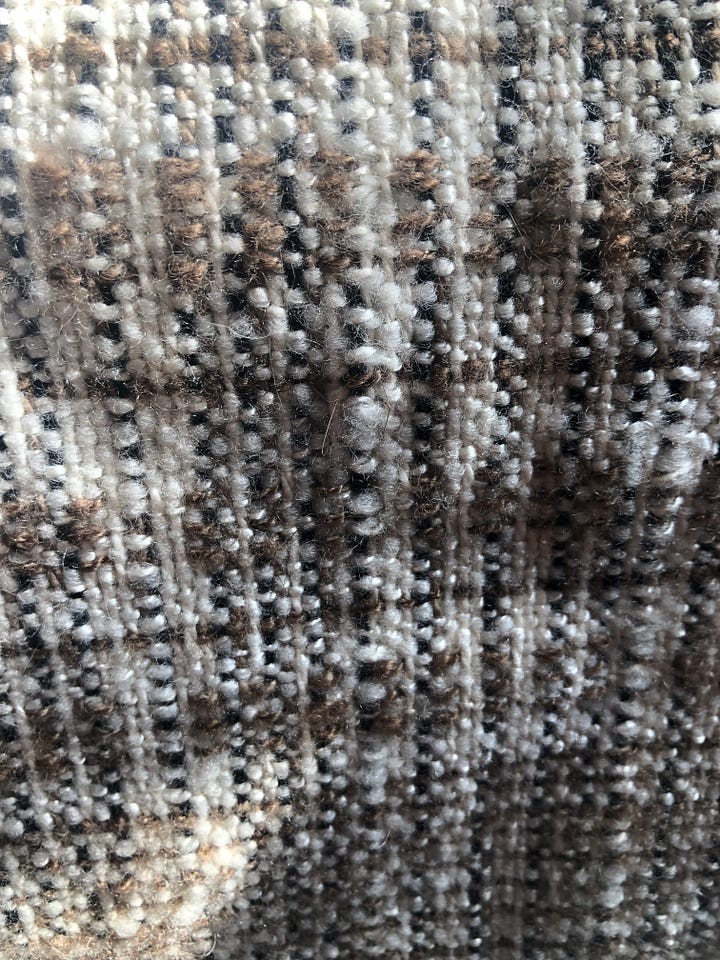
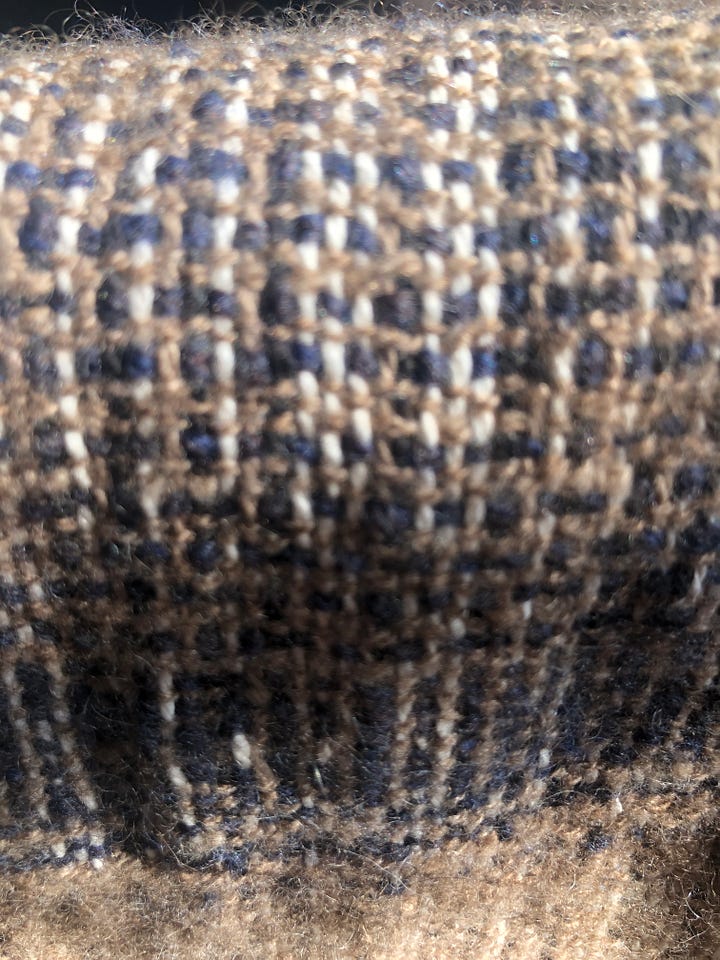
Here is a link to one (of many) article by me about this fundamental article of dress.
One of the sad facts of growing old is cataracts. My relationship with the subtleties of colors, the relative warmth or coolness of a hue, have been compromised by this pernicious growth on my eyeball. I empathize with good old Claude Monet on this.

